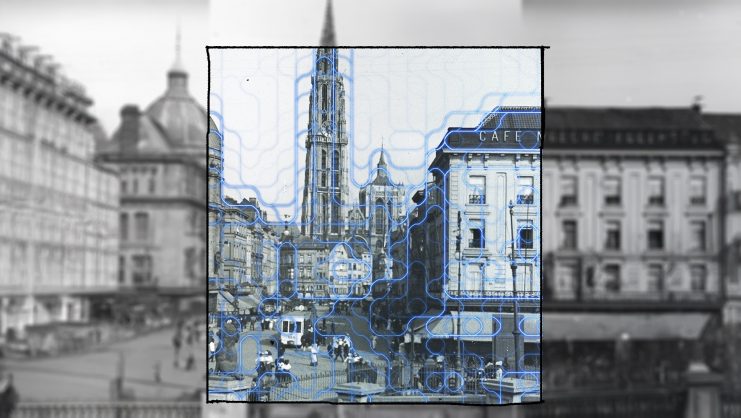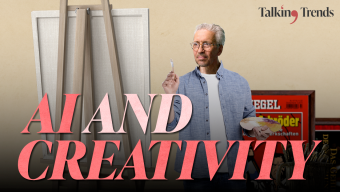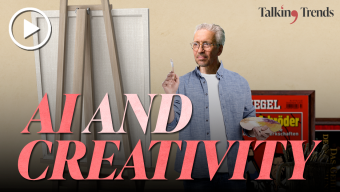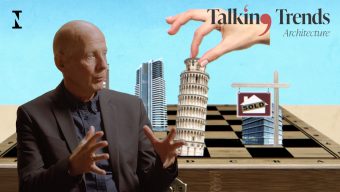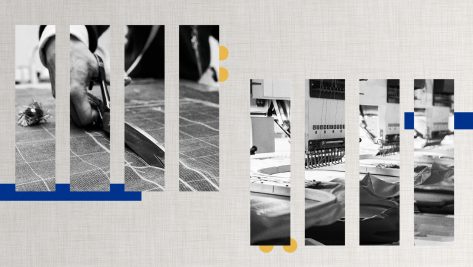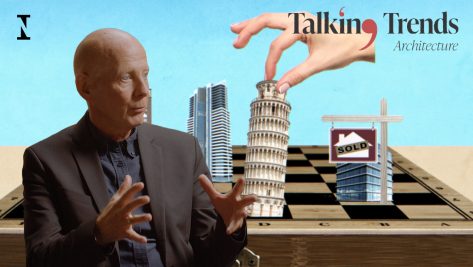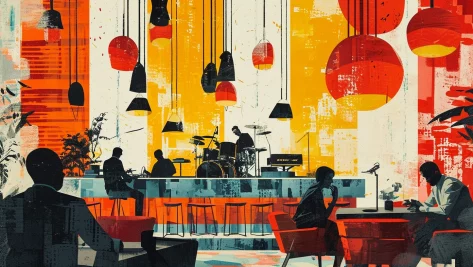Past Design Revolutions Can Guide Us in the Age of AI
The dawn of the AI revolution promises a “before and after” moment in human history. David Goodman, Dean of IE School of Architecture and Design, explains how the design movements which arose in response to the Industrial Revolution can help us navigate the changes we are experiencing around us.
© IE Insights.
Transcription
We are at the beginning of the beginning of something big. Artificial intelligence may touch every aspect of our lives, and I think we will look at this moment as one that divides before and after. Note that a greater change in ways of living than had occurred in all time previously was to take place in an astonishingly brief space of time.
But we’ve been through this before. The kinds of change that we’re about to live are many ways are like the Industrial Revolution, the discovery of electricity, fire, soap, massive developments that have changed basic elements of our life. And if we look back, maybe we can learn something from previous attempts to grapple with these changes. People who worked in the visual arts, architecture, design, city making, how they rethought what this massive change, what the Industrial Revolution would mean for cultural production. Really, the beginning, I would say, can be traced back to the exhibition of 1852 in London in the Crystal Palace, designed by Joseph Paxton. A tremendously ugly exhibition filled with these new products that could be made through industrial means of production. Before we might have a teacup, and that teacup could have a small band of ornament on it, that ornament would be made by hand and would be really expensive.
Well, once we have the tools of mass production, we can put ornaments all over it at no additional cost. And that’s what people did. To the point that the teacup was so ornamented that it barely worked any longer as a teacup, its function was compromised. This caused a negative reaction. The other thing is that increasingly production is separating the person who makes the object from the person who designs the object.
This is what the Industrial Revolution is doing. It’s creating a schism between conception and making. In response to this crisis, we see something called the Arts and Crafts movement, and the two leaders of the Arts and Crafts movement are the critic John Ruskin and William Morris. They thought the Arts and Crafts movement should effectively say no to the Industrial Revolution.
They aimed to recuperate earlier modes of expression. Let’s say non-academic modes of artistic expression. That’s what we should make. And how should we make it? Well, they wanted to avoid the split between the worker who designs and the worker who makes. They wanted to have an integration. This would lead to artistic movements around the world. So here in Spain, we have Modernismo.
We have Jugendstil. We have Art Nouveau. These are all basically the same thing. A look for a new way of making things. This would be picked up and carried elsewhere in the world. One of the important people to do this was a German by the name of Hermann Muthesius. And Muthesius has alternately been described as an industrial spy and a cultural attaché for the German Embassy in London.
What he did is he looked at the way the British had kind of solved this problem. How to integrate design into everyday life. Because at the 1876 World Exhibition in Philadelphia, the products of German industry were described literally as cheap and nasty. And it was the Germans who described it that way. So they were worried that they could only compete with the British on price.
And they said that’s not what we want to do. We want to compete on quality and on design. So what they did was they set up something called the Deutscher Werkbund, and Muthesius was one of the leaders. Muthesius had this idea: how many different teacups do we really need? Maybe there could be a typical German-style teacup, but that would be objectively the teacup, right?
And that we would make it high quality. On the other hand, Henry van de Velde, who was a Belgian painter, he thought that actually, somewhat more in line with the Arts and Crafts movement, it would be an opportunity for us to explore new possibilities. This new technology could lead us to make new things and a new style, a style that would involve the individual subjectivity of the artist.
And this debate would really be exposed at the 1914 Deutscher Werkbund exhibition in Cologne. There was a fight, basically, between these two sides. And if we look at one of the most important buildings at that exhibition, a theater designed by Henry van de Velde, we see that basically things were leaning towards the side of individual expression.
Now, World War One interrupts this utterly. After the war, the Werkbund takes a slightly different orientation. And this coincides with the beginning of what’s called the Modern Movement. The Modern Movement also thought about a before and after. The arrival of the Industrial Revolution mean that not only should we not make things that looked like the past, we should not work in the same way as the past.
So there are there are two important moments to talk about here. The first is the Deutscher Werkbund exhibition of 1927. What’s called the Weissenhofsiedlung. The Weissenhofsiedlung was an attempt to rethink how we live. In fact, the poster says “how to live”. The idea of the Weissenhofsiedlung, here we have architects like Mies van der Rohe and Le Corbusier showing a kind of mechanized, industrial style housing.
This is probably what we think of when we think of modern architecture: white boxes with ribbon windows. That’s the Weissenhofsiedlung. But contemporaneous with this is the founding of the Bauhaus. And the Bauhaus was an idea for a school that would educate across disciplines: architecture, design, textile design, graphic design, painting, and it would all add up to the complete work of art: the Gesamtkunstwerk. And here we get sort of leading talents in the world El Lissitzky, Wassily Kandinsky, Johannes Itten. And so what the Bauhaus aimed to do was to kind of continue the line, effectively the line that Muthesius had set out to adapt to an industrial culture. The Wassily Chair, which was designed by Marcel Breuer is kind of a design classic.
There’s the Brno chair designed by Mies van der Rohe, and let’s say the stacking tables designed by Josef Albers. These are sort of design classics that we have from the Bauhaus. But I think we face a similar moment now. The first reaction in the early days of the Arts and Crafts was to basically say no, but also an inward speculation on what should design be about, where should design come from.
And it eventually led to a kind of symbiotic relationship. Tools of industry, individual expression, function, all coming together. I think at its best, that’s what the Bauhaus promised. So as we grapple with AI, I think those lessons from the past can help us and help us accept the fact that we might not know what to do at first. And that it will and should trigger internal debate about how should we live, what should we make, and maybe most importantly, what is our role? What is the role of a designer in this process when we have tools that could perhaps do that job for us?



